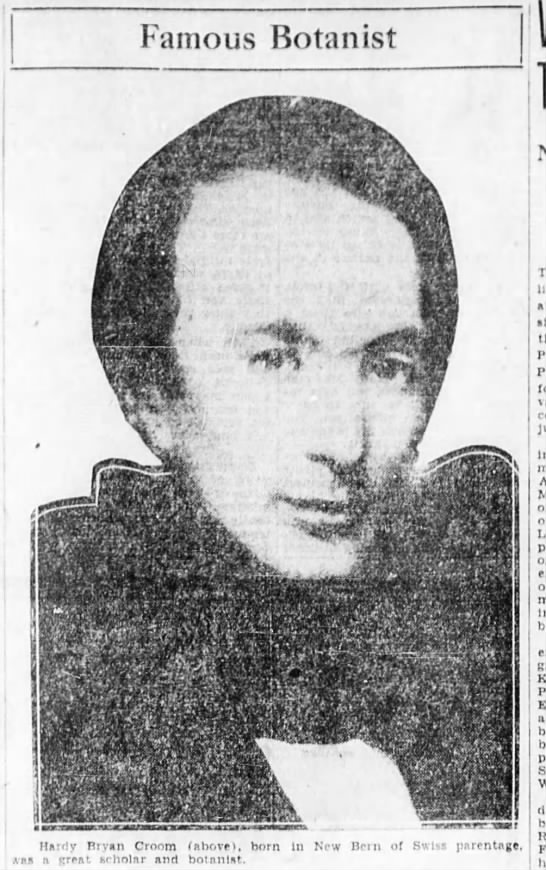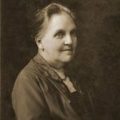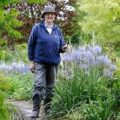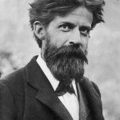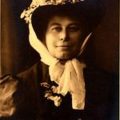Hardy Bryan Croom
Gopher Wood
Today is the birthday of the Florida botanist Hardy Bryan Croom who was born on this day in 1797.
Croom was trained as a lawyer, but since his inheritance from his father was substantial, he never practiced. As Croom matured, he began pursuing specialties like geology, mineralogy, and botany. When it came to botany, there was no botanist Croom admired more than John Torrey with whom he corresponded.
In 1834, Croom became an early landowner in Tallahassee. At the time, Florida was still a territory. Hardy Croom loved the Tallahassee region, and he set about building a home there for his family.
In fact, Croom bought not one, but two plantations with his fortune. As he traveled between them, he would study the exciting natural flora and fauna.
One day, as he traveled between the two plantations, Croom was waiting for a ferry along the east bank of the Apalachicola River when he discovered a new tree species and a new little plant growing in the shade canopy. Croom named the tree Torreya taxifolia in honor of his mentor, John Torrey.
One of the oldest tree species on earth, the Florida Torreya is also known by various common names, including gopher-wood, yew-leafed Torreya, Torreya wood, savin, stinking savin, and stinking cedar (for the strong odor of the sap and from the leaves and seed when crushed). The local legend is that the Torreya was the Biblical "gopher wood" used by Noah to build the ark.
To this day, the rare tree grows naturally only in this part of the world, along the roughly 30 mile stretch of the Apalachicola river between Chattahoochee and Bristol. There is another species of the same genus growing in California, and it is known as the California nutmeg.
In a newspaper account from 1947, the Torreya taxifolia that Croom had planted by the Florida capital building, over a century earlier, was still standing. Disease and aggressive harvesting nearly annihilated the tree species during the 20th century. Since the wood of the Torreya does not rot, it was used especially for fenceposts and shingles, as well as Christmas trees. Only 200 survive today.
At the same time Croom discovered the Torreya taxifolia, he discovered another little new plant species. This one would bear his name: the Croomia panciflora. Asa Gray, who was Torrey's assistant at the time, recalled Croom's modesty, saying:
"I was a pupil and assisistant of ....Torrey when Mr. Croom brought... him specimens...Iwell remember Mr. Croom's remark.... that if his name was deemed worthy of botanical honors, it was gratifying to him, and [that] it should be born by the unpretending herb which delighted to shelter itself under the noble Torreya [tree]."
So, in botany, as in life, Croom grew happily in the shadow of Torrey.
In 1837, one day after Croom's 40th birthday, Croom, his wife, and their three children - two girls age 15 and 7, and a son age 10 - all died when the steamboat Home was caught in a hurricane off of Cape Hatteras. Croom's body was never recovered. Tomorrow will be the 182nd anniversary of the disaster, which claimed the lives of 90 souls of the 130 aboard the steamboat, which had only two life vests. After the HomeSteamboat tragedy, Congress required seagoing ships to carry a life preserver for each passenger.
The loss of the entire Croom family created a legal dispute between the remaining family members. The matter remained unsettled for nearly two decades, and it hinged on attempting to discern which family member died last; based on eye witness testimony, incredibly the court finally agreed Croom's 10-year-old son was the last to die in the waves of the ocean and the bulk of Croom's estate was passed to his mother-in-law and not to his brother Bryan. Floridians naturally supported the Croom side of the dispute, and newspaper reports often said the decision could just as well have been made with an Ouija board.
This post was featured onThe Daily Gardener podcast:
helping gardeners find their roots,
one story at a time
